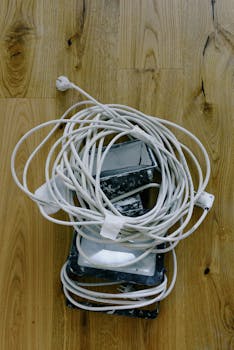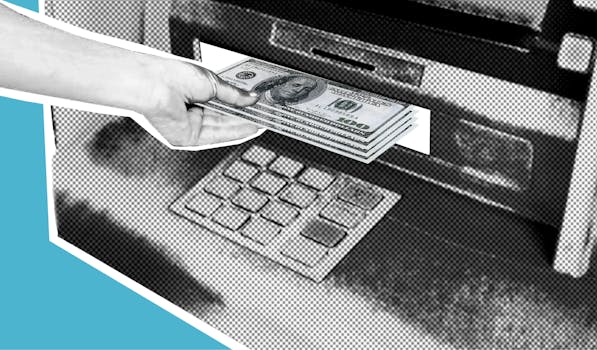Money Management
Achieving Real Balance: Saving, Spending, and Paying Off Debt Wisely
Unlock practical steps to balance saving, spending, and debt payoff without sacrificing joy. Build better habits and learn to manage your money confidently in daily life with adaptable strategies.
Advertisement
Finding your groove with money rarely feels like a straight line. One moment, saving feels possible; the next, a bill or impulse buy interrupts your plan. We strive to balance saving and spending while serious debt demands attention—how do you sync these moving parts?
Most people juggle multiple financial goals at once: building a cash cushion, enjoying today, and keeping creditors at bay. Whether you earn a little or a lot, realistic strategies matter far more than one-size-fits-all rules.
This article invites you to reframe your habits with simple, actionable steps. You’ll map priorities, prevent the most common pitfalls, and finally see how to balance saving and spending, even while paying down debt.
Building a Clear Money Roadmap Step by Step
A concrete, written plan helps transform money worries into clear next moves. Without this roadmap, the urge to splurge or panic decisions can undercut progress every month.
Start by writing out every bill, debt, and net paycheck. Assign each dollar a purpose—save, spend, or pay down debt—before you spend anything extra. This creates a snapshot that guides every financial choice.
Making Your Snapshot Work in Daily Life
Choose a method that feels natural—pen and paper works as well as a spreadsheet. Write your must-pay bills on one side and note how much goes to debt and savings separately.
For example, someone might say: “$100 to savings each payday, $250 for credit card, rent paid first, then groceries.” Tally expenses visibly so you catch leaks fast.
Check this plan before any unplanned spending. If you want a new jacket, glance at your roadmap and ask: Does this fit today’s plan, or should it wait?
Prioritizing With a Money Ladder
Picture your goals as rungs on a ladder. Essentials—housing, minimum loan payments—form the first rung. Next comes an emergency fund, then high-interest debt, and finally fun and larger saving goals at the top.
“I’ll keep climbing the ladder after groceries and rent are set” keeps priorities straight. Place what matters most at the bottom, so every extra dollar climbs up only after basics are secure.
This visual helps you balance saving and spending; even small progress up one rung each month means you’re advancing.
| Priority | Why It Matters | First Step | Takeaway |
|---|---|---|---|
| Essentials (Rent, Bills) | Keeps you safe and operational | List fixed costs first | Secure your foundation |
| Emergency Fund | Buffers unexpected expenses | Set auto-transfer, even $20 | Start early and small |
| Minimum Debt Payments | Prevents late fees/credit damage | Schedule autopay | Never miss these |
| High-Interest Debt | Saves money over time | Direct extra cash here | Pay more when you can |
| Discretionary Spending | Life enjoyment, balance | Allocate a set amount | Enjoy without guilt |
Setting Rules for Savings Without Feeling Restricted
Implementing set triggers or rules keeps your savings growing while you still enjoy your money. This approach turns saving into something automatic—not another tough decision.
Fix your savings for each payday, not the leftovers at month’s end. This shift ensures consistent progress and relieves the pressure to choose between fun and responsibility with every purchase.
Automating Success: Using Mechanisms That Do the Work
Set up automatic transfers to your savings as soon as each paycheck lands in your account. Choose a date, like the 1st or 15th—whatever lines up with your pay cycle.
Even modest amounts, such as $25 from every check, add up over a year. The real trick: Never touch your savings until you hit the target you set or face a true emergency.
- Start auto-transfer for every paycheck. This removes the chance to skip or forget.
- Link to a dedicated savings account. This prevents mingling spending and savings.
- Reduce temptation. Keep savings out of sight or difficult to access online.
- Label your account—for example, “New Car Fund” or “One-Month Cushion”—to make your goal tangible.
- Review progress quarterly. Adjust transfer size as income or bills change.
Each step makes saving easier than manual attempts, turning it into a steady habit.
Pocketing Small Wins to Keep Momentum
Give small savings a purpose right away. For example, if you canceled a subscription, transfer that exact monthly amount to savings that same day.
Use a banking notification as your reminder: “Transfer $12 from Hulu to Rainy Day Fund.” These quick actions reinforce your progress and turn savings wins into habits.
- Transfer coupon/discount savings instantly, keeping the saved amount visible.
- Sweep rounded-up change (from $3.60 coffee to $4) into your savings account.
- Move refunded returns directly to savings—their absence won’t be missed.
- Direct windfalls (gift cards, bonuses) straight to an “extra savings” pot before spending.
- Reward consistency—a treat after three saved months keeps motivation up.
By linking small victories with concrete actions, you shift savings from intention to reality.
Allocating Money to Debt: Addressing Stress Without Sacrifice
Tackling debt feels daunting, but putting it on autopilot relieves anxiety. Directing steady amounts to your balances means you see progress without giving up everything else.
Paying above minimums where possible knocks down interest fast, while flexible options let you breathe during tough months. Always inform lenders when hardship strikes—they can sometimes grant short-term relief.
Targeting the Right Debts in Sequence
List every debt—from credit cards to personal loans—by interest rate and balance. Highlight the highest-interest account with a bright marker and funnel extra cash there until gone.
Say: “$50 extra to my 18 percent APR card each month; everything else gets minimum.” Mark milestones—like dropping below $1,000—as the next focus, giving clear reason to celebrate.
This method, sometimes dubbed “avalanche approach,” works by shrinking your fastest-growing debts first, making each dollar conquer more interest in the long run.
Setting Up Flexible Payments for Real-Life Changes
Plan for unexpected ups and downs by making debt payments adjustable month-to-month. If you get a seasonal gig, add half to your next payment; in slow months, stick to minimums.
Notify lenders proactively about job changes or emergencies to prevent dings on your credit and potential fees. Keep your payment schedule written or digital for easy editing as life shifts.
Example: After a freelance project, put $200 of the bonus into debt; if you get hit with extra car repairs, reduce your next payment, then resume higher payments when possible.
Dividing Your Paycheck: Practical Frameworks for Any Budget
Assigning specific percentages to saving, spending, and debt turns each paycheck into a tool, not a temptation. Use frameworks that adjust to your real living costs.
Rather than aiming for perfection, build a rhythm—such as “50% needs, 30% wants, 20% savings and debt.” Review this split quarterly and tweak as your circumstances evolve.
Core Percentage Rule: Plug in Your Numbers
Start with a 50/30/20 split: half for must-have bills, thirty percent for flexible wants, and the last twenty percent for saving and extra debt payments. Round figures up or down to fit your income.
If your needs make up more than fifty percent, trim wants first—like fewer dinners out—before reducing debt or savings. If you live in a high-cost area, readjust numbers until you have a livable balance.
Revisit this every quarter, especially after big life changes like a move or new job. Put your split on paper: “This paycheck: $750 rent, $100 savings, $300 groceries, $150 card payment, $120 personal fun.” Keep tweaking until it feels realistic.
Monthly and Weekly Adjustment Rituals
Set aside a “Money Monday” (or your day off) monthly to review spending and adjust for the next period. Bring up your bank app, glance at your balances, and shift funds as needed to prevent overspending.
Use color coding—green for savings, red for overages, blue for debt—when tracking online or in a notebook. Circle unexpected expenses and look for trends you could avoid (like surge grocery costs or extra rideshares).
This ritual keeps you proactive, and visible patterns make tweaking your balance saving and spending plan feel like crossing items off a checklist, not a vague hope for improvement.
Handling Social and Emotional Triggers Without Sabotaging Progress
Emotions and peer pressure can unbalance saving and spending plans quickly. Recognize your triggers so you can respond thoughtfully, not impulsively, in social settings.
Prep a polite script—like “I’m on a tight savings drive, but I’ll join for a drink” in advance—so you stay connected to friends without breaking your priorities.
Name Your Top Spending Temptations
Track which purchases or events lead to regret. Note patterns—like buying late-night takeout after stressful days or splurging during weekend outings.
Jot down feelings before and after each trigger event. If online browsing spikes after a tough work meeting, switch your phone to airplane mode for 30 minutes instead.
Break the cue-routine-reward cycle by replacing high-cost rewards with no-cost treats, like a call with a friend or a favorite playlist.
Script Your Boundaries in Advance
Commit to phrases before risky spending situations: “I’ll budget $15 for treats tonight,” or “thanks, I’ll catch up after payday.” Practice delivering these lines calmly and with a smile.
Bring snacks or drink alternatives to group events if you’re saving for bigger goals. This ensures you stay social but avoid overspending.
List a quick back-up activity you enjoy—such as a walk or at-home movie night—so you have a ready alternative after saying no to expensive invitations.
Adapting Your Plan When Things Change Unexpectedly
Every plan must flex with life’s changes to stay relevant. Illness, job shifts, or surprise expenses mean aiming for progress, not perfection, will keep your balance saving and spending habit alive.
Accept setbacks as temporary, not failures. Mark a day each month to look back and name what went well, adjusting your roadmap for the upcoming cycle.
Emergency Tactics for Income Drops
When income dips, review your road map immediately and update categories: reduce fun spending, freeze extras, and lower debt payments to minimums until recovery.
Pause automatic savings only if truly necessary. Make a note to reinstate the routine as soon as possible, so it restarts effortlessly.
Contact creditors at once to discuss hardship options: many offer temporary reductions or deferments if you initiate contact early.
Pivots for Positive Changes
(New job or raise) Revisit your roadmap, adding to savings and bumping up extra debt payments before increasing spending. This habit builds lasting security as your income grows.
Direct windfalls—like tax refunds—50 percent to savings, 30 percent to debt, and 20 percent to a treat. Write these percentages onto a sticky note as your standard response for any surprise income.
Review your balance saving and spending slip quarterly and again after life changes, using these moments to align new resources with old priorities.
Bringing Your Plan Together for Ongoing Success
Balancing saving, spending, and paying down debt together is possible with a concrete, adaptable plan. Addressing each part—roadmap, automation, flexible debt payment, and emotional triggers—builds a system that supports your real-life goals.
Each review and ritual—whether weekly check-ins or automating a new saving rule—keeps you steering your money choices rather than reacting to stress or impulse. Consistency overrides perfection every time.
This approach moves you out of survival mode and toward building a future of choices. By using tools that match your style and needs, you can balance saving and spending even as debts decrease and priorities evolve.
Frequently Asked Questions
What’s the best method to start saving if I live paycheck to paycheck? Start with automated transfers, even if it’s just a few dollars a week. Treat savings as a fixed expense, just like rent or groceries. Small steps build habits and momentum.
Should I pay off debt or build savings first? Prioritize a small emergency fund—$500 to $1,000—before funneling extra to high-interest debt. Keep minimums on all debts and never skip them. Savings cushion prevents new debt in a crisis.
How do I stop emotional spending? Track when and why you spend impulsively—stress, fatigue, or social pressure. Prepare scripts or substitute activities to use in tough moments. Log your victories to reinforce new habits.
How should I handle a financial setback or loss of income? Review your plan immediately. Cut discretionary expenses, pause optional savings, and contact creditors before missing payments. Once stable, restart your savings and accelerated debt payments to regain momentum.
Can I still enjoy life while managing debt? Absolutely. Allocate a set amount each month for treats or fun activities. Clear boundaries ensure you maintain balance saving and spending without guilt, boosting motivation and making your plan sustainable.





